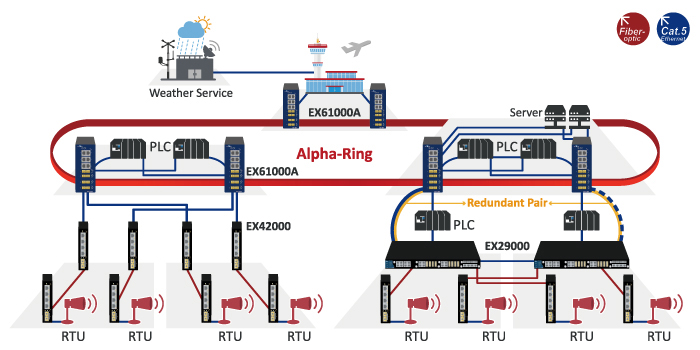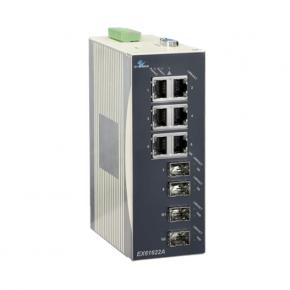Improving Safety with Hong Kong's Airport Lightning Warning

Background
With its monsoon-influenced subtropical climate, Hong Kong is prone to receiving heavy thunderstorms from April to September. With these thunderstorms come lightning strikes – lots of them. Over this period Hong Kong receives, on average, more than 5000 cloud-to-ground lightning strikes each month. Lightning is a potentially fatal hazard in most locations, but especially so at airports. While lightning is generally not a threat to aircraft, the open landscape, towers, and antennae create a lightning-prone environment that can be dangerous to ground handling personnel, service staff, and even passengers. Therefore, when lightning is impending, it is important that that airports receive timely alerts so that airport personnel can get to safety.
While the city's airport lacks the sophisticated detection equipment to identify and predict lightning, the Hong Kong Observatory is equipped with the latest and most advanced sensors for this task. Established in 1883, The Hong Kong Observatory detects and forecasts weather for the territory of Hong Kong, and issues warnings on weather-related hazards, including lightning. The observatory's Lightning Location Information System (LLIS) is comprised of a network of lightning location sensors distributed throughout the vicinity of the city.
Bridging the data compiled by the observatory with the needs of the airport, Hong Kong's Airport Authority introduced an airport lightning warning system to reduce the risk of lightning injury to airport staff working in exposed areas. The system connects the Hong Kong Observatory with the airport, allowing for advance warning to personnel when lightning is detected nearby. The system receives high level alerts from the Hong Kong Observatory, and warns the airport when lightning is forecast to strike within the Airport's 5 kilometer (Amber alert) or 1 kilometer (Red alert) boundary. During an amber warning, all non-essential activities on the airport apron are suspended. A red warning advises all personnel on the apron to take protective shelter.
The Challenge
In the sultry climate, all components of the system had to be highly resistant to heat and moisture. With future expansion of the lightning warning system a likely possibility, the system needed to be designed and implemented with high scalability. Furthermore, comprehensive network redundancy with minimal failover time was required, and the system had to be able to bring together diverse redundancy protocols in such a way that they functioned seamlessly.
System requirements include:
- Immunity to electromagnetic interference (EMI)
- System must be scalable for future expansion
- Highly resistant to moisture (95% Ambient relative humidity)
- Synchronized redundancy protocols (standard RSTP and Alpha-Ring)
- Able to operate in extremely wide temperature range: -40~75°C (Tested @ 85°C)
The Network Solution: EX61000A and EX29000
The EX61800 8-port 10/100BASE-TX industrial managed Ethernet switch provides fully managed switching platform that combines high performance with robust and secure management features. Added reliability is achieved through support for dual firmware images, providing independent primary and secondary operating system files for backup and recovery.
The EX29000 is an industrial fully managed 28-port switching platform. Highly modularized, the EX29000 switch supports up to 28 electrical and/or optical interfaces with data transfer rates of 10/100 Mbit/s. and up to four Gigabit, Fixed Fiber, or SFP Combo port options. Mountable on a 1U rack, the EX29000 Series also supports EtherWAN's Alpha-Ring technology.
All major management and security features such as SNMP and IGMP snooping are available on both the EX29000 and EX61800, and can be configured through an intuitive web-based management interface. Most importantly, for this safety-related application in an airport setting, both models meet the following EMI standards: FCC Part 15B Class A, EN 61000-6-4, EN 55032, EN 61000-3-2, and EN 61000-3-3, ensuring stable operation and data transmission even in the presence of strong electromagnetic interference.
Both models support a wide range of redundancy protocols, including EtherWAN's Alpha-Ring self-healing technology, a proprietary redundancy protocol that provides a fault recovery time of less than 15 milliseconds. This protocol is ideal for systems in which network downtime must be kept to an absolute minimum.

Conclusion
Lightning threats constitute a major danger to airport operations in tropical and subtropical latitudes. Leveraging the detection capabilities of local meteorological observatories is a promising approach to mitigate lightning threats. However, such systems require the use of network components that are highly resistant to adverse environmental conditions, while still supporting the latest and most advanced redundancy protocols. EtherWAN's expertise in hardened Ethernet equipment is allowing the company to deliver added network reliability to these new systems, which means more safety for airport operations staff around the world.
Related products:
EtherWAN – " When Connectivity is Crucial "
► For more information, please contact: info@etherwan.com.tw







